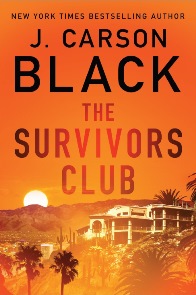Job: Homicide detective with the Santa Cruz County Sheriff’s Office on the Arizona/Mexico border
 I live in a rented a house on Harshaw Road. Harshaw Road is a poorly-maintained stretch of asphalt outside Patagonia proper—a mixed population of old houses jammed together on dead-end streets, and small ranchettes.
I live in a rented a house on Harshaw Road. Harshaw Road is a poorly-maintained stretch of asphalt outside Patagonia proper—a mixed population of old houses jammed together on dead-end streets, and small ranchettes.
My place is on a one-acre lot.
On this day, tired from a long day of hunting killers and working on the resulting paperwork, I turn off Harshaw Road onto the property, the Tahoe’s tires rumbling across the cattle guard, and park on the narrow lane that ends next to the house. The place needs paint. It needs a lot of things. But there’s a voluptuous pistachio tree in the front yard–one of two remaining from a long-ago orchard–complete with a tire swing.
That, along with the cheap rent and the great view, is what sold me on the place.
From the deep porch (and the porch swing left by its previous residents) I can watch the neighbor’s horses graze in the field across the way. I like to sit there and watch the day time-lapse away on the hill across the road, the emerald mesquites catching the last rays, the sun torching them DayGlo Green before the shadows finally advance and transform them to the color of ashes.
It is peaceful and quiet here, except when the coyotes start up at dawn. I like hearing them, as long as the cat is inside.
My house: two swings, but no dryer.
The cat isn’t waiting by the door. Sometimes he does and sometimes he doesn’t; he’s his own man. He distrusts me now more than when he first came here, and I can trace that to the trip to the vet’s office the time he was fixed.
I step up on the porch, unlock the door and go inside. As always, my gaze first goes to the display case by the arched window.
It is still in sunlight.
The arched window of my rented house is funny. For one thing, it is enormous. Someone tried to give a regular window an arch, and this one looks like something you’d carve out of a cardboard box.
But the display case holds my attention, as it always does.
I bought the curved-glass and wood display case at a local antique store. It came from a museum and cost me one whole paycheck. But it was worth every penny.
Let me explain.
I was an only child, but my two best friends were twin girls who lived next door. My mother and our neighbors would go on outings together—Beth, Jennifer, and me. Theme parks, movies, malls, McDonald’s. The twins taught me all about “souvenirs.”
To Beth and Jennifer the word “souvenirs” meant getting their Mom to buy them something—usually something kitschy, although I noticed that Jennifer always held out for more expensive swag. Everywhere we went, Beth and Jennifer clamored for souvenirs. I caught on quickly.
Fast-forward to my work as a homicide detective. In my whole career, I’ve only encountered one serial killer. I’m grateful for that. They are the hardest type of killer to find—they know how to fly under the radar. And I got lucky. That’s all it was–luck. What I saw in his house had been expected, but I was not prepared for how it affected me.
The killer kept trophies from the twelve women and girls he’d killed: a hairbrush, a pair of earrings, panties. Even one girl’s asthma inhaler.
The inhaler got to me more than anything else. I could imagine the girl’s fear as he choked her—a girl who knew what it was like to require air and fight for it.
And it was just a trophy for him.
That was when it occurred to me that someone had to mark the scoreboard for the good guys. And that someone might as well be me.
Every time I close a case, every time a bad guy’s put away, I pick out a souvenir that had meaning to the victim. Not the killer. The victim. To remember the dead. Not as victims, but for the people they were.
My “souvenirs” are distributed across three shelves. Placed before each of them is a card, neatly labeled. Right now there are six victims and six symbols of what had meaning for them: a baby’s rattle; a rodeo buckle; a bottle of Juicy Couture perfume, a bottle of CK One cologne; a “Genesis” CD, and a healing crystal from The Desert Oasis Healing Center.
My gaze lingers on the healing crystal, glinting in the sun coming in through the cardboard cut-out window.
Plenty of bad things had happened at The Desert Oasis Healing Center.
But one good thing had come of it.
The love of my life: Max Conroy.
You can read more about Tess in THE SURVIVORS CLUB.
Meet the author
Hailed by bestselling author T. Jefferson Parker as “a strong new voice in American crime fiction,” J. Carson Black has written fourteen novels. Her thriller, The Shop, reached #1 on the Kindle Bestseller list, and her crime thriller series featuring homicide detective Laura Cardinal became a New York Times and USA Today bestseller. Although Black earned a master’s degree in operatic voice, she was inspired to write a horror novel after reading The Shining. She lives in Tucson, Arizona.
Vist J. Carson at her website, on Twitter and on Facebook.
Books are available at online booksellers.

What a compelling beginning and would definitely like to read this book.
Thanks, Pamela – this book was so much fun for me to write!
Thanks JC for introducing us to Tess.